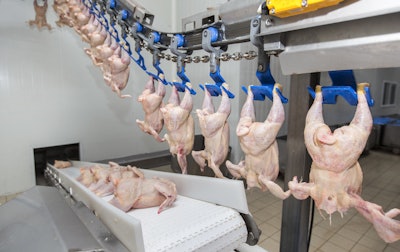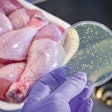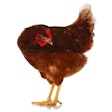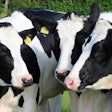
The U.S. Department of Agriculture (USDA) Food Safety and Inspection Service (FSIS) finalized its avian leukosis rule, which allows for the affected areas to be trimmed from poultry carcasses, instead of condemning the whole bird.
Rachel Edelstein, assistant administrator, USDA FSIS Office of Policy and Program Development, explained at the Delmarva Poultry Industry (DPI) National Meeting on Poultry Health, Processing and Live Production that the agency proposed the rule in 2022 and that it was recently approved and put into effect in September 2023.
When considering the approval, FSIS concluded that current scientific evidence shows treating avian leukosis as a trimmable condition is safe and consistent with the rules for other poultry diseases and conditions such as arthritis and bruises, explained Edelstein.
“Over the years, avian leukosis has become rarer and newly eradicated in commercial plants,” she said.
This is due to the poultry industry’s efforts to reduce the incidence of the condition, including vaccination, strict sanitation practices and selective breeding.
FSIS will continue to inspect for the condition. If found, any organ or part of a carcass affected will be deemed adulterated and must be trimmed before the unaffected parts of the carcass can be reinspected.
Edelstein believes that smaller poultry establishments that choose to trim carcass areas affected by avian leukosis will likely see a cost savings from the practice.
Why did the rule change?
The agency initiated the leukosis amendments to the rule in response to a 2019 National Chicken Council (NCC) petition. The petition stated the leukosis regulations were based on research from the 1950s, caused excessive costs to poultry producers and discouraged new chicken establishments from converting to the new poultry inspection system (NPIS).
The (NPIS) requires producers to provide a location along the production line where an FSIS inspector can inspect the first 300 carcasses of each flock together with the associated viscera. NPIS producers were previously required to provide an additional leukosis inspection area during processing and invest time and money to keep it operational.
The USDA FSIS’s newly passed regulation negates the additional inspection area and helps save resources for poultry producers.


















